Mirror: tinyurl.com/gu4d5wj
अश्विना aśvinā in the dual are signifiers of wealth and invoked as divinities in 473 ricas of Rigveda. Upamanyu's adoration of अश्विना describes the divinities as five elements of the Universe (See the narrative of Upamanyu's Trial embedded excerpt from Mahabharata.)
One of the अश्विन् aśvin is: ना* सत्य a [p= 523,3] mfn. (prob. fr. √2. नस् , Caus.) helpful , kind , friendly (mostly m. du. as N. of the अश्विन्s RV. ; later m.sg. N. of one of the अश्विन्s , the other being then called दस्र) relating or belonging to the अश्विन्s MBh. नासत्या f. the constellation अश्विनी L. The word occurs on Mitanni treaty (1380 BCE).
The devanagari text may be seen at "prapUrvagau pUrvajau chitrabhAnU..."
http://sanskritdocuments.org/mirrors/mahabharata/mbhK/mahabharata-k-01-itx.html (As Manasataramgini provides scintillating insights in the appended note of May 2006, the rica type of prayer offered to the अश्विना aśvinā by Upamanyu is an extraordinary evidence to unravel the import of the Aśvin metaphor in Rigveda ādhyAtmikā tradition -- as a metaphor for the senses, sensory perceptions).
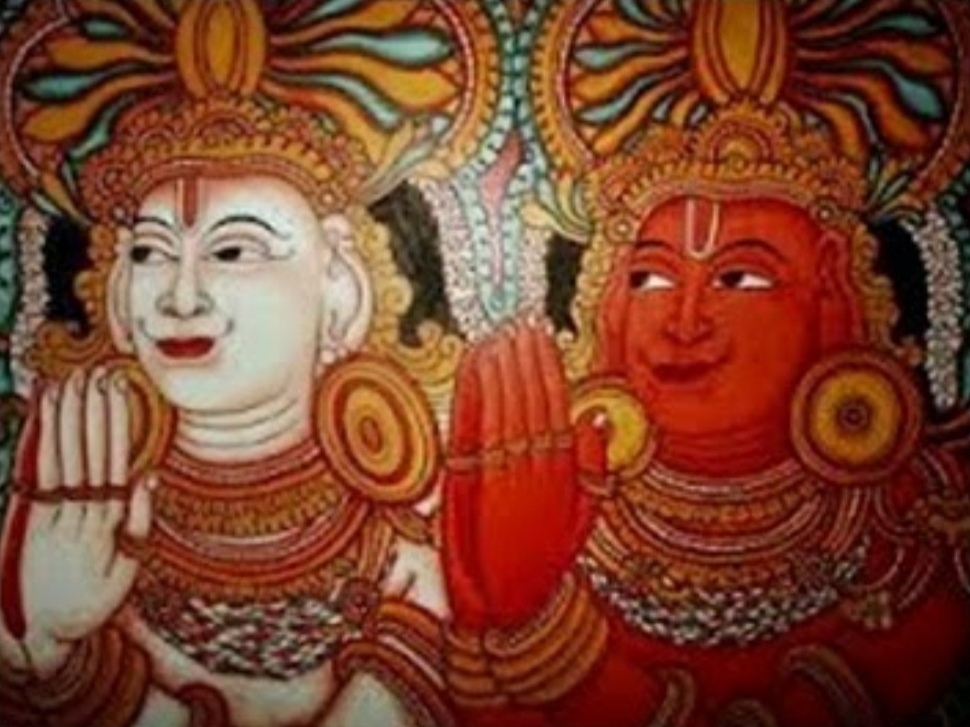
Aśvinā aśvinau Parents: Saranyu and Vivasvan Rigveda Divinities of Shining of Sunrise and Sunset Averting Misfortune and Sickness (Roman equivalent: Dioscuri) Saranyu is the daughter of the Divine Architect Vis'vakarman.
Sons of Saranyu, a goddess of the clouds and wife of Surya in his form as Vivasvant. Appear on a golden chariot shining of sunrise and sunset bringing treasures to worshippers and averting misfortune and sickness. " They are the doctors of gods and are devas of Ayurvedic medicine. They are represented as humans with the heads of horses. In the epic Mahabharata,..They are also called Nasatya (dual nāsatyau "kind, helpful") in the Rigveda; later, Nasatya is the name of one twin, while the other is called Dasra ("enlightened giving")...Ashwini Kumar brothers, the twins, who were Raja-Vaidya (Royal Physicians) to Devas during Vedic times, first prepared the Chyawanprash
formulation for Chyawan Rishi at his Ashram on Dhosi Hill near Narnaul,
Haryana, India, hence the name Chyawanprash...The Ashvins can be compared with the Dioscuri (the twins Castor and Pollux) of Greek and Roman mythology, and especially to the divine twins Ašvieniai of the ancient Baltic religion...The Nasatya twins are invoked in a treaty between Suppiluliuma and Shattiwaza, kings of the Hittites and the Mitanni respectively " https://en.wikipedia.org/wiki/Ashvins
(KBo 1 1. Gary M. Beckman (Jan 1, 1999). Hittite Diplomatic Texts. Scholars Press. p. 53.. Excerpt http://www.heritageinstitute.com/zoroastrianism/ranghaya/suppiluliuma_shattiwaza_treaty.htm )
Nasatya in Mitanni treaty na-ša-ti-ya-an-na (Cuneiform transctiption) = Nasatya-nna = Nāsatya (Vedic)
"In a treaty between the Hittites and the Mitanni (between Suppiluliuma
and Shattiwaza, c. 1380 BCE), the deities Mitra, Varuna, Indra, and Nasatya (Ashvins) are invoked. Kikkuli's horse training text (circa 1400 BC) includes technical terms such as aika (Vedic Sanskrit eka, one), tera (tri, three), panza (pañca, five), satta (sapta, seven), na (nava, nine), vartana (vartana, round). The numeral aika "one" is of particular importance because it places the superstrate in the vicinity of Indo-Aryan proper (Vedic Sanskrit eka, with regular contraction of /ai/ to [eː]) as opposed to Indo-Iranian or early Iranian (which has *aiva; compare Vedic eva "only") in general."
Ašvieniai, the divine twins who pulled the chariot of the Sun (the Vedic Ashwins or the Greek Dioskouri).Hamacher, Duane W. "The Sumerians and Gemini: Sumerian Astronomical Interpretations as Origins of the Divine Horse Twins and Solar Chariots in Indo-European Mythology (Unpublished manuscript)" (PDF). p. 7.
http://www.webcitation.org/5tso8HIGS?url=http%3A%2F%2Fblacktaj.homestead.com%2Ffiles%2Fdocuments%2FThe_Sumerians_and_Gemini.pdf Both names derive from the same Proto-Indo-European root for the horse – *ek'w-."Old Lithuanian ašva and Sanskrit ashva mean "horse". Ašvieniai are represented as pulling a carriage
of Saulė (the Sun) through the sky. https://en.wikipedia.org/wiki/Ašvieniai"![]()
अश्विन् aśvin अश्विन् a. अश्व-अस्त्यर्थे इनि] Possessed of horses, consisting of horses; Rv.4.2.5 m. A cavalier, a horse-tamer. -नौ (du.) 1 The two physicians of the gods who are represented as the twin sons of the Sun by a nymph in the form of a mare; cf. त्वाष्ट्री तु सवितुर्भार्या वडवारूपधारिणी । असूयत महाभागा सान्तरीक्षे$श्विनाबुभौ ॥ [According to Vedic conception they are the harbingers of Uṣas or the dawn; they are young, beautiful, bright, swift &c.; and, according to Yāska, they represent the transition from darkness of light, when the intermingling of both produces that insepa- rable duality expressed by the twin nature of these deities; according to different interpretations quoted in the Nirukta they were 'heaven and earth', 'day and night', 'two kings, performers of holy acts' which may be traced to their dual and luminous nature. Mythically they were the parents of Nakula and Sahadeva and the physicians of the gods and are called Gadāgadau, Svarvaidyau, Dasrau, Nāsatyau, Vādaveyau, Abdhijau &c. They were celebrated for their active benevolence and curative power which they showed in restoring the sage Chyavana, when grown old and decrepit. to youth, and prolonged his life.] -2 Two horses. -3 (In astr.) The twins of the zodiac.
अश्विनी aśvinī अश्विनी [अश्वस्तदुत्तमाङ्गाकारो$स्त्यस्य इनि ङीप्] 1 The first of the 27 Nakṣatras or lunar mansions (con- sisting of three stars). -2 A nymph considered in later times as the mother of the Aśvins, the wife of the Sun, who concealed herself in the from of a mare. -Comp. -कुमारौ, -पुत्रौ, -सुतौ the twin sons of Aśvinī, the Sun's wife.
"Ye are golden Eagles! Ye are the essence into which all things disappear! Ye are free from error and know no deterioration! Ye are of beauteous beaks that would not unjustly strike and are victorious in every encounter! Ye certainly prevail over time! Having created the sun, ye weave the wondrous cloth of the year by means of the white thread of the day and the black thread of the night! And with the cloth so woven, ye have established two courses of action appertaining respectively to the Devas and the Pitris. The bird of Life seized by Time which represents the strength of the Infinite soul, ye set free for delivering her unto great happiness! They that are in deep ignorance, as long as they are under delusions of their senses, suppose you, who are independent of the attributes of matter, to be gifted with form! Three hundred and sixty cows represented by three hundred and sixty days produce one calf between them which is the year. That calf is the creator and destroyer of all. Seekers of truth following different routes, draw the milk of true knowledge with its help. Ye Aswins, ye are the creators of that calf!
"The year is but the nave of a wheel to which is attached seven hundred and twenty spokes representing as many days and nights. The circumference of this wheel represented by twelve months is without end. This wheel is full of delusions and knows no deterioration. It affects all creatures whether to this or of the other worlds. Ye Aswins, this wheel of time is set in motion by you!
"The wheel of Time as represented by the year has a nave represented by the six seasons. The number of spokes attached to that nave is twelve as represented by the twelve signs of the Zodiac. This wheel of Time manifests the fruits of the acts of all things. The presiding deities of Time abide in that wheel. Subject as I am to its distressful influence, ye Aswins, liberate me from that wheel of Time. Ye Aswins, ye are this universe of five elements! Ye are the objects that are enjoyed in this and in the other world! Make me independent of the five elements! And though ye are the Supreme Brahma, yet ye move over the Earth in forms enjoying the delights that the senses afford.
"In the beginning, ye created the ten points of the universe! Then have ye placed the Sun and the Sky above! The Rishis, according to the course of the same Sun, perform their sacrifices, and the gods and men, according to what hath been appointed for them, perform their sacrifices also enjoying the fruits of those acts!
p. 37
"Mixing the three colours, ye have produced all the objects of sight! It is from these objects that the Universe hath sprung whereon the gods and men are engaged in their respective occupations, and, indeed, all creatures endued with life!
"Ye Aswins, I adore you! I also adore the Sky which is your handiwork! Ye are the ordainers of the fruits of all acts from which even the gods are not free! Ye are yourselves free from the fruits of your acts!
"Ye are the parents of all! As males and females it is ye that swallow the food which subsequently develops into the life creating fluid and blood! The new-born infant sucks the teat of its mother. Indeed it is ye that take the shape of the infant! Ye Aswins, grant me my sight to protect my life!"
The twin Aswins, thus invoked, appeared and said, 'We are satisfied. Here is a cake for thee. Take and eat it.' And Upamanyu thus addressed, replied, 'Your words, O Aswins, have never proved untrue. But without first offering this cake to my preceptor I dare not take it.' And the Aswins thereupon told him, 'Formerly, thy preceptor had invoked us. We thereupon gave him a cake like this; and he took it without offering it to his master. Do thou do that which thy preceptor did.' Thus addressed, Upamanyu again said unto them, 'O Aswins, I crave your pardon. Without offering it to my preceptor I dare not apply this cake.' The Aswins then said, 'O, we are pleased with this devotion of thine to thy preceptor. Thy master's teeth are of black iron. Thine shall be of gold. Thou shall be restored to sight and shall have good fortune.'
"Thus spoken to by the Aswins he recovered his sight, and having gone to his preceptor's presence he saluted him and told him all. And his preceptor was well-pleased with him and said unto him, 'Thou shalt obtain prosperity even as the Aswins have said. All the Vedas shall shine in thee and all the Dharma-sastras.' And this was the trial of Upamanyu. (pp. 35 to 37)
http://www.sacred-texts.com/hin/m01/m01004.htm
अश्विन् n. (= अश्व-वत् n. q.v.) richness in horses RV. i , 53 , 4. अश्विन् [p= 116,1] mfn.
possessed of horses , consisting of horses RV.; m. horse-tamer RV.; m. du. (/इना or इनौ) " the two charioteers " , N. of two divinities (who appear in the sky before the dawn in a golden carriage drawn by horses or birds ; they bring treasures to men and avert misfortune and sickness ; they are considered as the physicians of heaven) RV. &c
अश्विनी f. the head of Aries or the first of the 28 नक्षत्रs Jyot. VarBr2S. अश्विनी-पुत्रौ [p= 116,1] m. du. the twin sons of अश्विनी L.
![]()
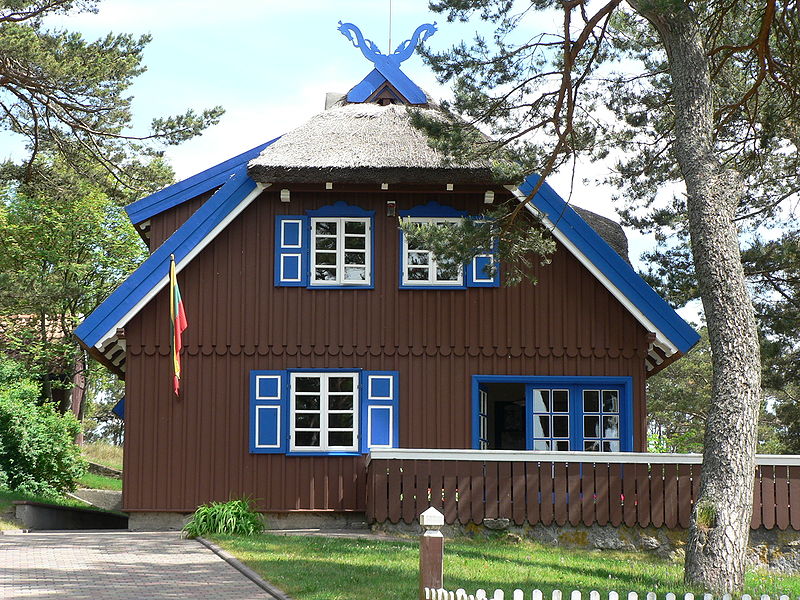
Ašviniai, commonly called the little horses, on the rooftop of a house in Nida, Lithuania.
I submit that as Upamanyu notes in his prayers, Aśvin are the five elements पञ्चन् -इन्द्रियम् an aggregate of the five organs (of sense or actions which constitute the Universe. In a unified field of unerstanding of the AtmA and paramAtman in the cosmic dance, the detailed metaphors of the 'horse-head' and Aśvin as divine 'healers' and restorers of anyone of five body parts (pancendriya), Aśvin metaphor is an elaboration of the ādhyAtmikā interpretation of phenomena which result in transmuttion of minerals and metals in the medium of fire and other cosmic elements (pancabhUta, five elements -- पृथ्वी, अप्, तेजस्, वायु and आकाश.).
पञ्चन् pañcan -अग्निः 1 an aggregate of five sacred fires; i. e. (अन्वाहार्यपचन or दक्षिण, गार्हपत्य, आहवनीय, सभ्य, and आव- सथ्य). -2 a householder who maintains the five sacred fires; पञ्चाग्नयोधृतव्रताः Māl.1; Ms.3.185. -इन्द्रियम् an aggregate of the five organs (of sense or actions; -भूतम् the five elements; पृथ्वी, अप्, तेजस्, वायु and आकाश.; -लोहकम् the five metals i. e. gold, silver, copper, tin and lead.पञ्चतात्वम् 1 Five-fold state. -2 A collection of five. -3 The five elements taken collectively. -4 the body; त्रित्वेहुत्वाथपञ्चत्वंतच्चैकत्वे$जुहोन्मुनिः Bhāg.1.15.42. -5 Death, dissolution; -पञ्चतां, -त्वम्गम्, -या &c. means 'to be resolved into the five elements of which the body consists', 'to die or perish'; -पञ्चतां, -त्वंनी 'to kill or destroy'; पञ्चभिर्निर्मितेदेहेपञ्चत्वंचपुनर्गते।स्वांस्वांयोनिमनु- प्राप्तेतत्रकापरिवेदना॥ Ratn.3.3; शब्दादिभिःपञ्चभिरेवपञ्चपञ्चत्वमापुःस्वगुणेनबद्धाःVivekachūdāmaṇi.
अश्विन् पु०द्विव०अश्वाःसन्तिययोःइनि, अश्विन्यांनक्षत्रेभवौ“सन्धिवेलाद्युतृनक्षत्रेभ्यःपा० अण्“नक्षत्रेभ्योबहुलम्” पा०वालुक्लुकिस्त्रीप्रत्ययस्य लुक्, अश्वाउत्पत्तिःस्थातत्वेनास्त्यस्यइनिवा।१स्वर्गवैद्ययोः।“किमश्विनौसोमरसंपिपासू” भट्टिः
“वासोदश्चन्द्रसालोक्यमश्विसालोक्यमश्वदः” मनुः।“त्वाष्ट्री तुसवितुर्भार्य्याबडवारूपधारिणी।असूयतमहाभागा सान्तरीक्षेऽश्विनाबुभौ” भा०आ०प०।“यावांकशा मधुमत्यश्विनासुनृतावती” यजु०७, २।अश्वस्तच्चिह्नावर्त्तः अस्त्यर्थेइनि।“कपोलयोस्तथावर्त्तौविद्येतेवाजि- नोर्यदि।तावाश्विनावितिप्रोक्तौराज्यवृद्धिकरौपरौ” इत्युक्तलक्षणयोः२हययोश्चद्वि०व०।३हययुक्तेत्रि०। स्त्रियांङीप्।“गोमाअग्नेऽविमाँअश्वी” ऋ०४, २, ५।
अश्विनी स्त्रीअश्वस्तदुत्तमाङ्गाकारोऽस्त्यस्यइनिङीप्। सप्तविंशतिधाविभक्तराशिचक्रस्यप्रथमेभागे।अस्या- स्तथाकारत्वमश्लेषाशब्देउक्तम्।“अश्निनीमघमूलानां गण्डाआद्यास्त्रिनाड़िकाः” ज्यो०नक्षत्रपरत्वेन०। “पुष्याश्विहस्तालघुः” ज्यो०अश्वायाआकारोऽस्त्यस्याःइनि ङीप्।हयरूपधारिण्यांत्वष्टृसुतायां३सवितुर्भा- र्य्यायामरुणात्मजशब्दे२६९पृ०विवृतिः।
अश्विनीकुमार पु०द्वि०व०।सूर्य्येणत्वष्टृसुतायांसंज्ञायां बड़वारूपायामुत्पादितयोःस्वर्वैद्ययोःतदुत्पत्तिकथाभा० आ०प०६६अध्यायेअश्विनीतनयपुत्रसुतादयोऽप्यत्र। अरुणात्मजशब्दे२६९पृ०विवरणम्।
अश्विनी, स्त्री, (अश्वःअश्वरूपंविद्यतेयस्याः।अश्व + इन् + ङीप्।) सप्तविंशतिनक्षत्रान्तर्गतप्रथम- नक्षत्रं।अश्विन्यादयोरेवत्यन्ताःसप्तविंशति- तारादक्षस्यापत्यत्वात्दाक्षायण्यउच्यन्ते।तत्प- र्य्यायः।अश्वयुक्२दाक्षायणी३।इत्यमरः॥
साचन्द्रस्यभार्य्या।नवपादात्मकमेषराशेरादि- चतुष्पादरूपाच॥अस्यारूपं।घोटकमुखा-कृतितारात्रयात्मकं।अस्याअधिष्ठात्रीदेवताअश्वारूढपुरुषः।इतिज्योतिःशास्त्रं।तस्यांजातफलं।“सदैवदेवाभ्युदितोविनीतःसत्त्वा-न्वितःप्राप्तसमस्तसम्पत्।योषाविभूषात्मज-भूरितोषःस्यादश्विनीजन्मनिमानवस्य” ।इतिकोष्ठीप्रदीपः॥तस्यमस्तकोपरिउदयेकर्कट-लग्नस्य१।३०त्रिंशत्पलाधिकदण्डैकोगतोभ-वति।यथा।“तन्विघोटकमुखाकृतौत्रिभेमस्तकोर्द्ध्वपथभाजिवाजिनि।चारुचन्द्रमुखिकर्कटोदयात्निर्गतागगनरन्ध्रलिप्तिका” ॥इतिश्रीकालिदासकृतरात्रिलग्ननिर्णयः॥
अश्विनीकुमारौ, पुं, (अश्विन्याअश्वीभूतसंज्ञानाम-सूर्य्यपत्न्याःयमजौकुमारौ।) अश्विनीसुतौ।अश्वीभूतसंज्ञानामसूर्य्यपत्न्याःयमजपुत्त्रौ।तौदेवचिकित्सकौ। (यथाहरिवंशे,“विवस्वान्कश्यापाज्जज्ञेदाक्षायण्यामरिन्दम ! ।तस्यभार्य्याभवत्संज्ञात्वाष्ट्रीदेवीविवस्वतः” ॥“देवौतस्यामजायेतामश्विनौभिषजांवरौ” ।)नित्यद्विवचनान्तशब्दोऽयं।
अश्विनीपुत्त्रौ, पुं, (अश्विन्याःपुत्त्रौ।) स्वर्व्वैद्यौ।इतिहेमचन्द्रः॥
अश्विनीसुतौ, पुं, (अश्विन्याःसुतौ।) अश्विनीपुत्त्रौ।तयोःपर्य्यायः।स्वर्वैद्यौ२अश्विनौ३दस्रौ४नासत्यौ५आश्विनेयौ६।इत्यमरः।नासिक्यौ७ गदागदौ८।इतिजटाधरः॥पुष्करस्रजौ९। रतिशब्दरत्नावली॥
अश्विनौ, पुं, (प्रशस्ताअश्वाःसन्तिययोः।इनिः। यद्वा, अश्विन्याम्जातौ।सन्धिवेलेत्यणोनक्ष- त्रेम्योबहुलमितिलुकिलुक्तद्वितलुकीतिङीपो लुक्॥) अश्विनीकुमारौ।इत्यमरः॥ (“त्वाष्ट्रीतुसवितुर्भार्य्यावडवारूपधारिणी। असूयतमहाभागासान्तरीक्षेऽश्विनावुभौ” ॥ इतिमहाभारते। “किमश्विनौसोमरसंपिपासू” । इतिभट्टौ।) (“अश्विनौदेवभिषजौयज्ञवाहावितिस्मृतौ। दक्षस्यहिशिरश्छिन्नंपुनस्ताभ्यांसमाहितं॥ प्रशीर्णादशनाःपूष्णोनेत्रेनष्टेभगस्यच। वज्रिणश्चभुजस्तम्भस्ताभ्यामेवचिकित्सितः॥ चिकित्सितस्तुशीतांशुर्गृहीतोराजयक्ष्मणा। सोमान्निपतितश्चन्द्रःकृतस्ताभ्यांपुनःसुखी॥ भार्गवश्च्यवनःकामीवृद्धःसन्विकृतिंगतः। वीतवर्णस्वरोपेतःकृतस्ताभ्यांपुनर्युवा॥ एतैश्चान्यैश्चबहुभिःकम्मभिर्भिषगुत्तमौ। बभूवतुर्भृशंपूज्याविन्द्रादीनांमहात्मनां॥ ग्रहास्तोत्राणिमन्त्राणितथान्यानिहवींषिच। धूम्राश्चपशवस्ताभ्यांप्रकल्प्यन्तेद्विजातिभिः॥प्रातश्चसवनेसोमंशक्रोऽश्विभ्यांसहाश्नुते। सौत्रामण्याञ्चभगवानश्विभ्यांसहमोदते॥ इन्द्राग्नीचाश्विनौचैवस्तूयन्तेप्रायशोद्विजैः।स्तूयन्तेवेदवाक्येषुनतथान्याहिदेवताः॥ अमरैरजरैस्तावद्विबुधैःसाधिपैर्ध्रुवैः। पूज्येतेप्रयतैरेवमश्विनौभिषजाविति॥”इतिचरकः॥“श्रूयतेहियथारुद्रेणयज्ञस्यशिरश्छिन्नमितिततोदेवाअश्विनावभिगम्योचुः।भगवन्तौनःश्रेष्ठतमौयुवांभविष्यथः।भवद्भ्यांयज्ञस्यशिरःसन्धातव्यं।तावूचतुरेवमस्त्विति।अथतयोरर्थेदेवाइन्द्रंयज्ञभागेनप्रासादयन्।ताभ्यांज्ञम्यशिरःसंहितमिति” ॥इतिसुश्रुतः॥)
1 YE Asvins, rich in treasure, Lords of splendour, having nimble hands, Accept the sacrificial food.
2 Ye Asvins, rich in wondrous deeds, ye heroes worthy of our praise, Accept our songs with mighty thought.
3 Nasatyas, wonderworkers-, yours are these libations with clipt grass: Come ye whose paths are red with flame.
2 Ye Asvins, rich in wondrous deeds, ye heroes worthy of our praise, Accept our songs with mighty thought.
3 Nasatyas, wonderworkers-, yours are these libations with clipt grass: Come ye whose paths are red with flame.
element , primitive matter (= महा-भूत L. ) MBh. Hariv. &c; primary element of the earth i.e. metal , mineral , are (esp. a mineral of a red colour) Mn. MBh. (usually reckoned as 5 , viz. ख or आकाश,अनिल, तेजस्, जल, भू
अश्विना in the dual is used to mean 'horses' in Rigveda RV 1.53.4. In this rica, horses and cattle are desired to dispel poverty; thus, possession of cattle, and horses signify 'wealth'.
The form अश्विनौ is also used to signify 'two charioteers'..Thus, it is possible to explain the semantics of अश्विन् -- in the context of Rigveda references -- as 1. horse; 2.charioteer; 3. horse tamer; possessed of horses , consisting of horses RV.
Dhaumya had forbidden his student Upamanyu from eating all edible things. Upamanyu disobeyed the Guru’s command and ate some arka leaves (Asclepias gigantea) and became blind. Upamanyu became blind and had fallen into a well.Dhaumya told him to worship Asvin. Here is the account rendered in translation by
Dhaumya, the precptor said: 'Glorify the twin Aswins, the joint physicians of the gods, and they will restore thee thy sight.' And Upamanyu thus directed by his preceptor began to glorify the twin Aswins, in the following words of the Rig Veda:
'Ye have existed before the creation! Ye first-born beings, ye are displayed in this wondrous universe of five elements! I desire to obtain you by the help of the knowledge derived from hearing, and of meditation, for ye are Infinite! Ye are the course itself of Nature and intelligent Soul that pervades that course! Ye are birds of beauteous feathers perched on the body that is like to a tree! Ye are without the three common attributes of every soul! Ye are incomparable! Ye, through your spirit in every created thing, pervade the Universe!
"The year is but the nave of a wheel to which is attached seven hundred and twenty spokes representing as many days and nights. The circumference of this wheel represented by twelve months is without end. This wheel is full of delusions and knows no deterioration. It affects all creatures whether to this or of the other worlds. Ye Aswins, this wheel of time is set in motion by you!
"The wheel of Time as represented by the year has a nave represented by the six seasons. The number of spokes attached to that nave is twelve as represented by the twelve signs of the Zodiac. This wheel of Time manifests the fruits of the acts of all things. The presiding deities of Time abide in that wheel. Subject as I am to its distressful influence, ye Aswins, liberate me from that wheel of Time. Ye Aswins, ye are this universe of five elements! Ye are the objects that are enjoyed in this and in the other world! Make me independent of the five elements! And though ye are the Supreme Brahma, yet ye move over the Earth in forms enjoying the delights that the senses afford.
"In the beginning, ye created the ten points of the universe! Then have ye placed the Sun and the Sky above! The Rishis, according to the course of the same Sun, perform their sacrifices, and the gods and men, according to what hath been appointed for them, perform their sacrifices also enjoying the fruits of those acts!
p. 37
"Mixing the three colours, ye have produced all the objects of sight! It is from these objects that the Universe hath sprung whereon the gods and men are engaged in their respective occupations, and, indeed, all creatures endued with life!
"Ye Aswins, I adore you! I also adore the Sky which is your handiwork! Ye are the ordainers of the fruits of all acts from which even the gods are not free! Ye are yourselves free from the fruits of your acts!
"Ye are the parents of all! As males and females it is ye that swallow the food which subsequently develops into the life creating fluid and blood! The new-born infant sucks the teat of its mother. Indeed it is ye that take the shape of the infant! Ye Aswins, grant me my sight to protect my life!"
The twin Aswins, thus invoked, appeared and said, 'We are satisfied. Here is a cake for thee. Take and eat it.' And Upamanyu thus addressed, replied, 'Your words, O Aswins, have never proved untrue. But without first offering this cake to my preceptor I dare not take it.' And the Aswins thereupon told him, 'Formerly, thy preceptor had invoked us. We thereupon gave him a cake like this; and he took it without offering it to his master. Do thou do that which thy preceptor did.' Thus addressed, Upamanyu again said unto them, 'O Aswins, I crave your pardon. Without offering it to my preceptor I dare not apply this cake.' The Aswins then said, 'O, we are pleased with this devotion of thine to thy preceptor. Thy master's teeth are of black iron. Thine shall be of gold. Thou shall be restored to sight and shall have good fortune.'
"Thus spoken to by the Aswins he recovered his sight, and having gone to his preceptor's presence he saluted him and told him all. And his preceptor was well-pleased with him and said unto him, 'Thou shalt obtain prosperity even as the Aswins have said. All the Vedas shall shine in thee and all the Dharma-sastras.' And this was the trial of Upamanyu. (pp. 35 to 37)
http://www.sacred-texts.com/hin/m01/m01004.htm
The Mahabharata, Book 1: Adi Parva: Paushya Parva: Section III
1.053.04 Propitiated by these offerings, be these libations, dispel poverty with cattle and horses; may we subduing our adversary, and relived from enemies by Indra, (pleased) by our libations, enjoy together abundant food.
Griffith translation: Well pleased with these bright flames and with these Soma drops, take thou away our poverty with steeds and kine. With Indra scattering the Dasyu through these drops, freed from their hate may we obtain abundant food.
अश्विन् n. (= अश्व-वत् n. q.v.) richness in horses RV. i , 53 , 4. अश्विन् [p= 116,1] mfn.
possessed of horses , consisting of horses RV.; m. horse-tamer RV.; m. du. (/इना or इनौ) " the two charioteers " , N. of two divinities (who appear in the sky before the dawn in a golden carriage drawn by horses or birds ; they bring treasures to men and avert misfortune and sickness ; they are considered as the physicians of heaven) RV. &c
अश्विनी f. the head of Aries or the first of the 28 नक्षत्रs Jyot. VarBr2S. अश्विनी-पुत्रौ [p= 116,1] m. du. the twin sons of अश्विनी L.
473 references in Rigveda: अश्विन्
HYMN III. Asvins 3 | |
2 Ye Asvins, rich in wondrous deeds, ye heroes worthy of our praise, | |
11 Drink ye the meath, O Asvins bright with flames, whose acts are pure, who with | |
HYMN XXII. Asvins and Others 22 | |
2 We call the Asvins Twain, the Gods borne in a noble car, the best | |
3 Dropping with honey is your whip, Asvins, and full of pleasantness | |
4 As ye go thither in your car, not far, O Asvins, is the home | |
17 Come, Asvins, with enduring strength wealthy in horses and in kine, | |
Travels, O Asvins, in the sea. | |
HYMN XXXIV. Asvins. 34 | |
1 Ye who observe this day be with us even thrice: farstretching- is you bounty, Asvins and your | |
Three are the pillars set upon it for support: thrice journey ye by night, O Asvins, thrice by day. | |
And thrice vouchsafe us store of food with plenteous strength, at evening, O ye Asvins, and at | |
12 Borne in your triple car, O Asvins, bring us present prosperity with noble offspring. | |
Accordant with the Asvins and with Dawn grant us heroic strength and lofty fame. | |
HYMN XLVI. Asvins. 46 | |
High, Asvins, I extol your praise, | |
O Asvins, harness ye the car. | |
12 The singer of their praise awaits whatever grace the Asvins give, | |
14 O circumambient Asvins, Dawn follows the brightness of your way: | |
15 Drink ye of our libations, grant protection, O ye Asvins Twain, | |
HYMN XLVII. Asvins. 47 | |
2 Come, O ye Asvins, mounted on your triple car threeseated-, beautiful of form | |
4 Omniscient Asvins, on the thriceheaped- grass bedew with the sweet juice the sacrifice. | |
16 O Asvins wonderful in act, do ye unanimous direct | |
Do ye, O Asvins, bring strength hither unto us. | |
With hands auspicious and fair arms, ye Asvins, haste, sprinkle it with sweetness in the waters. | |
HYMN CXII. Asvins. 112 | |
Come hither unto us, O Asvins, with those aids wherewith in fight ye speed the warcry- to the | |
Come hither unto us, O Asvins, with those aids wherewith ye help our thoughts to further holy acts. | |
Come hither unto us, O Asvins, with those aids wherewith ye, Heroes, made the barren cow give milk. | |
Wherewith the sapient one acquired his triple lore, Come hither unto us, O Asvins, with those aids. | |
Wherewith ye set at liberty the swallowed quail, Come hither unto us, O Asvins, with those aids. | |
And to sage Bharadvaja gave protecting help, Come hither unto us, O Asvins, with those aids. | |
And Trasadasyu when the forts were shattered down, Come hither unto us, O Asvins, with those aids. | |
Wherewith ye shot your shafts in Syumarasmis' cause. Come hither unto us, O Asvins, with those | |
Wherewith ye bring delicious honey to the bees, Come hither unto us, O Asvins, with those aids. | |
Wherewith ye safely guard his horses and his car, Come hither unto us, O Asvins with those aids. | |
24 Make ye our speech effectual, O ye Asvins, and this our hymn, ye mighty WonderWorkers-. | |
25 With, undiminished blessings, O ye Asvins, for evermore both night and day protect us. | |
HYMN CXVI. Asvins. 116 | |
18 When to his house ye came, to Divodasa, hasting to Bharadvaja, O ye Asvins, | |
25 1 have declared your wondrous deeds, O Asvins: may this be mine, and many kine and heroes. | |
HYMN CXVII. Asvins. 117 | |
2 That car of yours, swifter than thought, O Asvins, which drawn by brave steeds cometh to the | |
11 Hymned with the reverence of a son, O Asvins ye Swift Ones giving booty to the singer, | |
When, like a pitcher full of gold, O Asvins, on the tenth day ye lifted up the buried? | |
16 The quail had invocated you, O Asvins, when from the wolfs' devouring jaws ye freed her. | |
19 Great and wealgiving- is your aid, O Asvins, ye, objects of all thought, made whole the cripple. | |
21 Ploughing and sowing barley, O ye Asvins, milking out food for men, ye WonderWorkers-, | |
25 These your heroic exploits, O ye Asvins, done in the days. of old, have men related. | |
HYMN CXVIII. Asvins. 118 | |
1. FLYING, with falcons, may your chariot, Asvins, most gracious, bringing friendly | |
Fill full our cows, give mettle to our horses, and make each hero son grow strong, O Asvins. | |
How then have ancient sages said, O Asvins, that ye most swiftly come to stay affliction? | |
4 O Asvins, let your falcons bear you hither, yoked to your chariot, swift, with flying pinions, | |
Bearing oblations I invoke you, Asvins, at the first break of everlasting morning. | |
HYMN CXIX. Asvins. 119 | |
Then verily your car is seen upon the slope when ye, O Asvins, bring some choice boon to the | |
5 Asvins, the car which you had yoked for glorious show your own two voices urged directed to its | |
HYMN CXX. Asvins. 120 | |
6 Hear ye the song of him who hastens speedily. O Asvins, I am he who sang your praise. | |
10 I have obtained the horseless car of Asvins rich in sacrifice, | |
3 Asvins, the pious call you with their hymns of praise, sounding their loud song forth to you, | |
HYMN CLVII. Asvins. 157 | |
2 When, Asvins, ye equip your very mighty car, bedew, ye Twain, our power with honey and with oil. | |
4 Bring hither nourishment for us, ye Asvins Twain; sprinkle us with your whip that drops with | |
Ye have sent forth, O Asvins passing mighty, the fire, the sovrans of the wood, the waters, | |
HYMN CLVIII. Asvins. 158 | |
May this cow yield her milk for both the Asvins, and may she prosper to our high advantage. | |
HYMN CLXXX. Asvins. 180 | |
Fireoffering- thence is yours, O Asvins, Heroes: your carwheels- speed to us like springs of honey. | |
8 You of a truth day after day, O Asvins, that he might win the very plenteous torrent, | |
10 With songs of praise we call today-, O Asvins, that your new chariot, for our own wellbeing-, | |
HYMN CLXXXI. Asvins 181 | |
Rapid as thought, with fair backs, full of vigour, resplendent in their native light, O Asvins. | |
HYMN CLXXXII. Asvins. 182 | |
Bring your full chariot hither heaped with liquid sweet: thereon, ye Asvins, come to him who | |
4 Crunch up on. every side the dogs who bark at us: slay ye our foes, O Asvins this ye understand. | |
Like twigs, of which some winged creature may take hold, ye, Asvins, bore him off safely to your | |
HYMN CLXXXIII. Asvins. 183 | |
6 We have passed over the limit of this darkness: our praise hath been bestowed on you, O Asvins. | |
HYMN CLXXXIV. Asvins. 184 | |
6 We have passed over the limit of this darkness: our praise hath been bestowed on you, O Asvins. | |
HYMN XXXIX. Asvins. 39 | |
Asvins, these hymns that struggle to approach you, sharpen ye like an axe upon a whetstone. | |
8 These prayers of ours exalting you, O Asvins, have the Grtsamadas, for a laud, made ready. | |
9 As such, O longedfar- Asvins, lead us on to wealth of varied sort, | |
Bright, checkless, as it were upon the Asvins' path, he passeth by the stones and burneth up the | |
HYMN LVIII. Asvins. 58 | |
Have not the sages of old time, ye Asvins, called you most prompt to come and stay misfortune? | |
4 Remember us, and come to us, for ever men, as their wont is, invocate the Asvins. | |
8 Asvins, to you are brought abundant viands in rivalry with sacred songs, unceasing. | |
4 May those most powerful steeds and chariot bring you, O Asvins, hither at the break of morning. | |
9 Long, O ye Asvins, may he live, your care, ye Gods, the princely son. | |
Long life, O Asvins, O ye Gods. | |
HYMN XLIII. Asvins. 43 | |
4 What is the prayer that we should bring you, Asvins, whereby ye come to us when invocated? | |
HYMN XLIV. Asvins. 44 | |
1. WE will invoke this day your car, farspreading-, O Asvins, even the gathering, of the sunlight, | |
Who, for the sacrifices' ancient lover, turneth you hither, Asvins, offering homage? | |
HYMN XLV. Asvins 45 | |
Refresh the way ye go, refresh the paths with meath: hither, O Asvins, bring the skin that holds | |
5 Well knowing solemn rites and rich in meath, the fires sing to the morning Asvins at the break | |
7 Devout in thought I have declared, O Asvins, your chariot with good steeds, which lasts for ever, | |
3 You will I call to feed the carhorse-, Asvins, with the winds' flight swiftest of those who | |
18 May we obtain the Asvins' newest favour, and gain their healthbestowing- happy guidance. | |
8 Hither, as herald to invite the Asvins, come the great lofty song, most sweet and pleasant! | |
17 May we obtain the Asvins' newest favour, and gain their healthbestowing- happy guidance. | |
You, Asvins, Heroes rich in treasures, daily seeking your friendship fain would I turn hither. | |
8 Associate with all the Gods, come, with the Asvins and with Dawn, | |
HYMN LXXIII. Asvins. 73 | |
1. WHETHER, O Asvins, ye this day be far remote or near at hand, | |
9 Asvins, with truth they call you Twain bestowers of felicity; | |
10 Most pleasing to the Asvins be these prayers which magnify their might, | |
HYMN LXXIV. Asvins. 74 | |
1. WHERE in the heavens are ye today-, Gods, Asvins, rich in constancy? | |
8 O Asvins, may your car approach, most excellent of cars for speed. | |
10 O Asvins, when at any time ye listen to this call of mine, | |
HYMN LXXV. Asvins. 75 | |
2 Pass, O ye Asvins, pass away beyond all tribes of selfish men, | |
Asvins, with winged steeds ye speed down to cyavana void of guile. Lovers of sweetness, hear my | |
Your flying steeds, O Asvins, bring you hitherward, with bliss, to drink. Lovers of sweetness, | |
Beside the singer, Asvins, who longs for your grace and lauds you both. Lovers of sweetness, hear | |
HYMN LXXVI. Asvins 76 | |
Borne on your chariot, Asvins, turn you hither and come unto our full and rich libation. | |
2 Most frequent guests, they scorn not what is ready: even now the lauded Asvins are beside us. | |
By day, by night, with favour most auspicious. Not only now the draught hath drawn the Asvins. | |
4 For this place, Asvins, was of old your dwelling, these were your houses, this your habitation. | |
5 May we obtain the Asvins' newest favour, and gain their healthbestowing- happy guidance. | |
HYMN LXXVII. Asvins. 77 | |
The Asvins claim the sacrifice at daybreak: the sages yielding the first share extol them. | |
2 Worship at dawn and instigate the Asvins: nor is the worshipper at eve rejected. | |
Swift as thought, Asvins, rapid as the tempest, wherewith ye travel over all obstructions. | |
5 May we obtain the Asvins' newest favour, and gain their healthbestowing- happy guidance. | |
HYMN LXXVIII. Asvins. 78 | |
2 O Asvins, like a pair of deer, like two wild cattle to the mead: | |
3 O Asvins rich in gifts, accept our sacrifice to prosper it: | |
Ye came to him, O Asvins, with the freshest and most auspicious fleetness of a falcon. | |
Ye Asvins, listen to my call: loose Saptavadhri from his bonds. | |
Ye, Asvins, with your magic powers rent up the tree and shattered it. | |
5 That chariot of the Asvins, fair to look on, pleaseth me well, yoked with a thought, refulgent, | |
HYMN LXII. Asvins. 62 | |
HYMN LXIII. Asvins. 63 | |
HYMN LXVII. Asvins. 67 | |
5 Bring forward, Asvins, Gods, to its fulfilment my neverwearied- prayer that asks for riches. | |
6 Favour us in these prayers of ours, O Asvins. May we have genial vigour, Never to fail us. | |
10 Now hear, O Youthful Twain, mine invocation: come, Asvins, to the home where food aboundeth. | |
HYMN LXVIII. Asvins. 68 | |
1. COME, radiant Asvins, with your noble horses: accept your servants' hymns, ye WonderWorkers-: | |
3 Your chariot with a hundred aids, O Asvins, beareth you swift as thought across the regions, | |
Ye made the cow pour forth her milk like water, and, Asvins, strengthened with your strength the | |
HYMN LXIX. Asvins. 69 | |
Whereon ye visit Godadoring- races, bending your course whither ye will, O Asvins. | |
Herewith, O Asvins, while the dawn is breaking, to this our sacrifice bring peace and blessing. | |
Uninjured, winged, flagging not, undaunted, with deeds of wonder saving him, O Asvins. | |
8 Now hear, O Youthful Twain, mine invocation: come, Asvins, to the home where food aboundeth. | |
HYMN LXX. Asvins. 70 | |
1. RICH in all blessings, Asvins come ye hither: this place on earth is called your own possession, | |
3 Whatever dwellings ye possess, O Asvins, in fields of men or in the streams of heaven, | |
7 This is the thought, this is the song, O Asvins: accept this hymn of ours, ye Steers, with | |
HYMN LXXI. Asvins. 71 | |
2 Bearing rich treasure in your car, O Asvins, come to the mortal who presents oblation. | |
6 This is the thought, this is the song, O Asvins: accept this hymn of ours, ye Steers, With | |
HYMN LXXII. Asvins. 72 | |
HYMN LXXIII. Asvins. 73 | |
The song invoketh both Immortal Asvins farreaching-, born of old, great WonderWorkers. | |
Be near and taste the pleasant juice, O Asvins: with food, I call you to the sacrifices. | |
HYMN IXXIV.. Asvins. 74 | |
1. THESE morning sacrifices call you, Asvins, at the break of day. | |
3 Approach ye and be near to us. drink, O ye Asvins, of the meath. | |
With these your speedy coursers, Heroes, Asvins, come, ye Gods, come wellinclined- to us. | |
5 Yea, verily, our princes seek the Asvins in pursuit of food. | |
HYMN V. Asvins. 5 | |
Attend, O Asvins, on the Dawn. | |
Come, Asvins, to our song of praise | |
10 O Asvins, bring us wealth in kine, in noble heroes, and in cars: | |
14 Ye Asvins whom our minds perceive, drink of this lovely gladdening draught, | |
Moved by the priests, O Asvins, conic. | |
O Asvins, are invoking you. | |
O Asvins, nearest to your hearts. | |
O Asvins, drink ye both therefrom. | |
27 For so much bliss, or even more, O Asvins, Wealthy Gods, than this, | |
28 Ascend your car with golden seat, O Asvins, and with reins of gold, | |
31 From far away ye come to us, Asvins, enjoying plenteous food | |
32 With splendour, riches, and renown, O Asvins, hither come to us, | |
37 As such, O Asvins, find for me my share of newpresented- gifts, | |
HYMN VIII. Asvins. 8 | |
1. WITH all the succours that are yours, O Asvins, hither come to us: | |
2 Come now, ye Asvins, on your car decked with a sunbright- canopy, | |
So now, O Asvins, come to us, come near to this mine eulogy. | |
8 Do others more than we adore the Asvins with their hymns of praise? | |
9 The holy singer with his hymns hath called you, Asvins, hitherward-; | |
Then, O ye Asvins, ye attained all wishes that your hearts desired. | |
11 Come thence, O Asvins, on your car that hath a thousand ornaments: | |
The Asvins, Riders through the sky, have welcomed this my song of praise. | |
13 O Asvins, grant us all rich gifts wherewith no man mav interfere. | |
Come thence, O Asvins, on your car that hath a thousand ornaments. | |
16 Bestow on him, O Asvins, food that strengthens, and that drops with oil, | |
19 Come to us, Asvins, ye Who bring felicity, auspicious Ones, | |
For these, O Asvins, graciously assist us in acquiring strength. | |
22 O Asvins, may pure hymns of ours, and songs and praises, honour you: | |
23 Three places of the Asvins, erst concealed, are made apparent now. | |
HYMN IX. Asvins. 9 | |
Bestow, ye Asvins, upon us. | |
4 Asvins, for you with song of praise this hot oblation is effused, | |
Therewith, O Asvins, succour me. | |
8 Ye Asvins, now ascend your car that lightly rolls upon its way. | |
13 When I, O Asvins, call on you today- that I may gather strength, | |
Or as allconquering- might in war, be that the Asvins' noblest grace. | |
14 Now come, ye Asvins, hitherward: here are oblations set for you; | |
And to this manprotecting- home the chariot ofthe Asvins comes. | |
And voices sound the song of praise, the Asvins' worshippers show first. | |
21 When Asvins, worthy of our lauds, ye seat you in the fathers' house. | |
HYMN X. Asvins. 10 | |
Or in a mansion that is built above the sea, come thence, ye Asvins, hitherward. | |
3 Those Asvins I invoke who work marvels, brought hither to receive, | |
Or with your Godlike natures stand upon your cars, come thence, O Asvins, hitherward. | |
8 And may the Asvins, the divine Pair of Physicians, send us health: | |
HYMN XXII. Asvins. 22 | |
With those, O Asvins, come hither with speed and soon, and heal whatever is diseased. | |
11 When we continually invoke the Asvins, the resistless, at this time of day, | |
13 I speak to both of these as such, these Asvins whom I reverence at this time of day: | |
15 For bliss I call. the blissful car, at morn the inseparable Asvins with their car | |
17 Come, WonderWorkers-, to our home, our home, O Asvins, rich in cattle, steeds, and gold, | |
HYMN XXVI. Asvins. 26 | |
O Asvins, Heroes, let your car, famed, best to travel, come to us, | |
5 Asvins, who send us precious gifts, even when offended, think of him: | |
7 With allsustaining- opulence, Asvins, come hitherward to us, | |
The Asvins help to glory honouring him well. | |
About his dwelling go, ye Asvins, loving us. | |
19 O Asvins, with that glorious fame come hither, through our brilliant song, | |
HYMN XXXV. Asvins. 35 | |
Approach, ye Asvins, come to us: I call you, eager for your aid. Grant treasures to the worshipper. | |
Approach, ye Asvins, come to us: I call you, eager for your aid. Grant treasures to the worshipper. | |
Approach, ye Asvins, come to us: I call you, eager for your aid. Grant treasures to the worshipper. | |
4 Asvins, with songs the singer stones have made you hasten hitherward, | |
HYMN LXII. Asvins. 62 | |
2 Come, Asvins, with your car more swift than is the twinkling of an eye | |
6 The Asvins, first to hear our prayer, for closest kinship I approach: | |
12 One common brotherhood is yours, Asvins your kindred is the same: | |
13 This is your chariot, Asvins, which speeds through the regions, earth and heaven | |
17 He looked upon the Asvins, as an axearmed- man upon a tree: | |
HYMN LXXIV. Asvins. 74 | |
2 This laud of mine, ye Asvins Twain, and this mine invitation hear, | |
6 Come to the worshippers' abode, Asvins, who here is lauding you, | |
8 Come hither, Asvins, on your car of triple form with triple seat, | |
HYMN LXXV. Asvins. 75 | |
HYMN LXXVI. Asvins. 76 | |
1. SPLENDID, O Asvins, is your praise. Come fountainlike-, to pour the stream. | |
2 Drink the libation rich in sweets, O Asvins Twain: sit. Heroes, on the sacred grass. | |
5 Come to us, O ye Asvins, now with steeds of many a varied hue, | |
So, wondrous, fair, and famed for great deeds come to us, through our hymn, Asvins, when ye hear. | |
Selfluminous- the Asvins drink. | |
HYMN IX. Asvins. 101 | |
6 Ye Asvins, make our sacrifice ascend to heaven, and animate the rite that it may send us bliss, | |
HYMN XXXIX. Asvins. 39 | |
You, you who must be lauded, will we bring for aid, so that this foe of ours, O Asvins, may | |
6 Listen to me, O Asvins; I have cried to you. Give meyour- aid as sire and mother aid their son. | |
13 Come, Conquerors of the sundered mountain, to our home, Asvins who made the cow stream milk for | |
HYMN XL. Asvins. 40 | |
2 Where are ye, Asvins, in the evening, where at morn? Where is your haltingplace, where rest ye | |
The bee, O Asvins, bears your honey in her mouth, as the maid carries it purified in her hand. | |
And ye throw open, Asvins, unto those who win the cattlestall- that thunders with its serenfold | |
Fain would we reach the dwelling of the vigorous Steer who loves the kine, O Asvins: this is our | |
HYMN XLI. Asvins. 41 | |
Or to the sages' poured libations ye approach, come thence, O Asvins, now to drink the offered | |
1. THE welcome speaker in the storm of battle uttered with might this prayer to win the Asvins, | |
14 When on your threewheeled- chariot, O Asvins, ye came as wooers unto Suryas' bridal, | |
7 Yea, let the Asvins Twain he gracious unto us, even Rudras, and all Gods, Bhaga, Rathaspati; | |
HYMN CVI. Asvins. 106 | |
7 Fierce Asvins(), like two powerful heroes(), you enable this moving, perishable mortal frame() | |
And may the Asvins, both the Gods, strengthen the worshipper with bliss. | |
HYMN CXLIII. Asvins. 143 | |
4 This claims your notice, Bounteous Gods! - oblation, Asvins! and our love, | |
May the Twain Gods bestow the germ, the Asvins crowned with lotuses. | |
3 That which the Asvins Twain rub forth with the attritionsticks- of gold, |
Excerpted from a blogpost of Manasataramgini (May 30, 2006):
ashvina stuti
The adi parvan of the mahAbhArata provides a remarkable “fossilized” sUktaM to the ashvins. It comes in the 3rd chapter of the adi parvan known as the pauShya section (1.3.60 in the critical Poona edition of the mahAbhArata). This section is a particularly interesting in terms of retaining some of the archaic structures of the epic, probably coming unadulterated from the original form of the jaya epic. Its frame narrates the tale of how janamejaya, the kuru emperor, and conqueror of takShashIla came to perform his infamous sarpa yaGYa to avenge the killing of his father parIkShit by the nAga chief. From this frame bud off many archaic tales, one of which is the tale of trial of the sage upamanyu of the clan of the vasiShThas. In this tale, upamanyu as a young student in the ashrama of his teacher Ayodo dhaumya was particularly well-fed in his appearance. dhaumya cuts off his means of food, namely from the alms received in the city or from the cows he took to graze, by instructing him not to eat or drink any of those things. In this state dhaumya asked upamanyu to go and graze his cows. upamanyu without any food eats the leaves of the arka plant and as a consequence goes blind and falls into a pit while crawling about. Upon seeing his absence at sunset that day, dhaumya and his students set out in search of upamanyu and call out to him in the pastures. They hear him crying out from a pit and mention his blindness. dhaumya asks him to invoke the ashvins. He immediately composes a series of R^ichas with which he praises the ashvins. As a result they are pleased and give him an apUpa cake. upamanyu states that he will eat the cake only after offering it to his teacher. They urge upamanyu to do so without offering him, but he refuses. Pleased with his devotion they relieve him of his blindness and the twin gods also give him a denture of gold, unlike the steel denture they had given his teacher dhaumya. As a result dhaumya states that upamanyu has passed his trial and blesses him to be a great scholar of the vedas and the dharmashAstras.
This ashvina sUktaM of upamanyu (UAS) is a rather remarkable hymn in many respects:
1) It is unlike most other material in the mahAbhArata actually very close to the vedic metaphors and style, using a triShTubh based meter that is typical of vedic. For example the use of the term dAsapatnI i.e one powered by the demonic dAsa or vala is clearly a vedic usage not encountered elsewhere in later Sanskrit.
2) However, in its language it shows late features closer to the epic Sanskrit, particularly in the dvandva forms ending in –au as against the vedic forms with –A (e.g. nAsatyA or ashvinA). Use of aruNa instead of uShA is also atypical with respect to the vedic formulations.
3) It alludes to several mythological motifs of astronomical provenance that are common in the veda but rarely found in those particular forms in the later Hindu mythologies. These include the important motif of the regeneration of the sun and dawns, which is strikingly expressed in multiple forms in this hymn as in the vedic hymns. These expressions include the ashvins leading forth the dawns, setting free the quail grabbed by the eagle, bursting of the mountain stronghold of vala to set free the days and waters and the swallowing of the embryo and its re-birth. Also present are the motifs of the wheel of time with 720 spokes (720 days and nights), with 12 spokes (12 months) and 6 seasons on the rim of the wheel. These are very similar to the metaphors used by dIrghatamA auchAthya of the clan of the a~Ngiras in hymn RV 1.165. Another metaphor used in the UAS is that of the 360 cows bearing one calf (the sun), which in turn equated with the gharma offering to the ashvins with the uktha chant in the pravargya rite.
The whole setting of the upamanyu tale involves a mythography that recapitulates the sun regeneration myth often seen in the R^igveda. upamanyu, like other R^igvedic characters saved by the ashvins, namely chyavAna (buried in a termite hill), parAvR^ija and dIrghatamA, had gone blind, and like antaka and atri, other protégés of the ashvins, had fallen in a pit. This is an allegory to sun being lost in winter and is made more direct by the mention that quest for upamanyu, who had fallen in the pit begins after the sun had set. Further his denture of gold given by the ashvins is also a cryptic allegory for the returning sunshine.
The UAS in not found in any surviving saMhitA of the veda and upamanyu is far removed in age from the hoary hymn composers of the R^ig and atharvaN. Instead, it appears that it represents an intermediate hymn, a late vedic composition in the epic period. This suggests that hymn composition in the R^igvedic style continued well into the epic period. It is thus a rare sample of the class of “Vedic” compositions that happened in the period of composition of the original jaya and is one of the survivals of the actual religious structures of the jaya period, which are hidden under the heavily pauranicized extant mahAbhArata. We will also reinforce this point with another short hymn, the indra stuti of utanka the bhArgava in the same section of the mahAbhArata.
The frame tale of UAS also has a structure resembling the mythological fragments of the bR^ihad-devata of shaunaka and brAhmaNa texts, especially like those in the jaiminIya brAhmaNa. This suggests that a similar core set of ancestral mythological frame tales were reused both in the generation of brAhmaNa texts and the itihAsa. These are likely to represent the original itihAsa-purANa. The frame of the UAS suggests that it is a case where an actual history has been adapted to fit an influential pre-existing mythological motif. The weakening or disappearance of the sun in winter and its regeneration, along with the dawns and the release of the frozen waters, was a striking motif acquired in the northern homeland of the Indo-Europeans. Given the strong impression it left on the Aryans, it was reused in various contexts of act regeneration by the ashvins and other gods. This ancient memory was well-preserved in the language of myth and found its way in the narrative of upamanyu’s trial and revival.
We provide below a translation and commentary on the UAS.
1.3
prapUrvagau pUrvajau chitrabhAnU girA vA sha.nsAmi tapanAvanantau .
divyau suparNau virAjau vimAnAvadhikShiyantau bhuvanAni vishvA .. 60..
prapUrvagau pUrvajau chitrabhAnU girA vA sha.nsAmi tapanAvanantau .
divyau suparNau virAjau vimAnAvadhikShiyantau bhuvanAni vishvA .. 60..
You have existed before the emergence of the sun, the first-born beings, of beautiful luster. I desire your help with this chant, oh blazing ones who are infinite. You are the course of existence what pervades existence, the heavenly birds of beauteous feather and are in everything and pervade the universe.
hiraNmayau shakunI sAmparAyau nAsatyau dasrau sunasau vaijayantau .
shukra.n vayantau tarasA suvemAvabhi vyayantAvasita.n vivasvat .. 61..
shukra.n vayantau tarasA suvemAvabhi vyayantAvasita.n vivasvat .. 61..
You are golden birds, you are the future of existence, the truth, with good noses and victorious in battle. Having generated the sun, you weave the wondrous cloth of the year by means of the white thread [of the day] and the black thread [of the night].
grastA.n suparNasya balena vartikAm.h amu~nchatAm.h ashvinau saubhagAya .
tAvatsuvR^ittAvanamanta mAyayA sattamA gA aruNA udAvahan .. 62..
tAvatsuvR^ittAvanamanta mAyayA sattamA gA aruNA udAvahan .. 62..
Oh ashvin twins, endowed with auspiciousness, you set free the quail seized by the the strong grip of the eagle. Oh leaders indeed you are of good [chariot] wheels and indeed un-deceivable, with your powers you go leading the dawns.
ShaShTishcha gAvastrishatAsh cha dhenava eka.n vatsam.h suvate ta.n duhanti .
nAnA goShThA vihitA ekadohanAs tAvashvinau duhato gharmamukthyam.h .. 63..
nAnA goShThA vihitA ekadohanAs tAvashvinau duhato gharmamukthyam.h .. 63..
Sixty cows and three hundred cows suckle one calf between them (1). The various cowpens together yield one milking, indeed this is the hot milk offering [gharma in the pravargya pot] with the uktha chant milked by the ashvins.
ekAm.h nAbhi.n saptashatA arAH shritAH pradhiShvanyA viMshatirarpitA arAH .
anemi chakram.h parivartate .ajaram.h mAyAshvinau samanakti charShaNI .. 64..
anemi chakram.h parivartate .ajaram.h mAyAshvinau samanakti charShaNI .. 64..
There is one nave with 700 spokes fixed, also fixed to it are 20 more spokes (2). This spoked wheel, turns endlessly, you ashvins have set them together [spokes] in motion.
eka.n chakra.n vartate dvAdashAram.h pradhi ShaNNAbhimekAkShamamR^itasya dhAraNam.h.
yasmindevA adhi vishve viShaktAs tAvashvinau mu~nchato mA viShIdatam.h.. 65..
yasmindevA adhi vishve viShaktAs tAvashvinau mu~nchato mA viShIdatam.h.. 65..
The one wheel with twelve spokes, and the circumference with the six [season] rotates around the one axle without an end (3). Upon this the gods are all stationed, Oh ashvins free me from the influence of the toxin.
ashvinAv-indram-amR^ita.n vR^ittabhUyau tirodhattAm-ashvinau dAsapatnI .
bhittvA girimashvinau gAmudAcharantau tadvR^iShTamahnA prathitA valasya .. 66..
bhittvA girimashvinau gAmudAcharantau tadvR^iShTamahnA prathitA valasya .. 66..
Oh immortal ashvins and indra, you twins who generate the rotations, oh ashvins remove those powered by the demonic dasas. Oh ashvins, burst the mountain stronghold of the demon vala, and go fort to bring out the waters and spread out the day light.
yuvA.n disho janayatho dashAgre samAnam.h mUrdhni rathayA viyanti .
tAsA.n yAtamR^iShayo.anuprayAnti devA manuShyAH kShitimAcharanti .. 67..
tAsA.n yAtamR^iShayo.anuprayAnti devA manuShyAH kShitimAcharanti .. 67..
In the beginning, you twin youths generated [space] with ten directions; then you set the chariot moving in the [sky] above (4). The R^iShis, according to the course of the same [sun], perform their sacrifices, and the gods and men, accordingly occupy their respective stations.
yuvA.n varNAnvikurutho vishvarUpA.ns te.adhikShiyanti bhuvanAni vishvA .
te bhAnavo. apyanusR^itAsh charanti devA manuShyAH kShitimAcharanti .. 68..
te bhAnavo. apyanusR^itAsh charanti devA manuShyAH kShitimAcharanti .. 68..
Youths! From the [basic] colors, you have produced all the various forms; it is from these objects that the entire universe is filled. Ordained by these rays of [color] the gods and men occupy their respective stations.
tau nAsatyAv-ashvinAv-Amahe vAm.h sraja.n cha yAm.h bibhR^ithaH puShkarasya .
tau nAsatyAv-amR^itAv-R^itAvR^idhAv R^ite devAs-tat-prapadena sUte .. 69..
tau nAsatyAv-amR^itAv-R^itAvR^idhAv R^ite devAs-tat-prapadena sUte .. 69..
You nAsatyas, ashvins I worship you two, who wear garlands and bear lotus flowers. You nasAtyas, the immortal ones, the upholders of the R^ita, you impel the R^ita through which the devas attain their [stations].
mukhena garbha.n labhatAm.h yuvAnau gatAsuretatprapadena sUte .
sadyo jAto mAtaramatti garbhastAvashvinau mu~nchatho jIvase gAH .. 70..
sadyo jAto mAtaramatti garbhastAvashvinau mu~nchatho jIvase gAH .. 70..
The embryo has been taken through the mouth, oh youths impel this one who has expired to obtain [his station]. The mother, eater of the embryo, has brought it out (5); Oh ashvins release me and bring to life.
Notes
(1) 360 cows are the days of the year giving birth to the calf, the sun. The allegory here is thus: At the end of 360 days, the year, the sun has declined or disappeared at the winter solstice. The sun is then born in the new year as the calf. In the same R^ik the pravargya gharma, which represent the sun is also mentioned.
(2) 720 days and nights of the year are allude to here.
(3) The twelve fold division of the year- the 12 vedic months, and the 6 seasons are allude to here.
(4) An allusion to the sun’s chariot.
(5) The metaphor suggests the embryo, implying the sun, is being eaten and born again at the year beginning.
MBh 1.3.57 to 1.3.67 (Devanagari text transcribed in ASCII)
prapUrvagau pUrvajau chitrabhAnU girA vAM shaMsAmi tapasA hyanantau. divyau suparNau virajau vimAnA- vadhikShipantau bhuvanAni vishvA.. 1-3-57 (756)hiraNmayau shakunI sAMparAyau nAsatyadasrau sunasau vaijayantau. shuklaM vayantau tarasA suvemA- vadhivyayantAvasitaM vivasvataH.. 1-3-58 (757)grastAM suparNasya balena vartikA- mamu~nchatAmashvinau saubhagAya. tAvatsuvR^ittAvanamaM tamAya yA- vasattamA gA aruNA udAvahat.. 1-3-59 (758)ShaShTishcha gAvastrishatAshcha dhenava ekaM vatsaM suvate taM duhanti. nAnAgoShThA vihitA ekadohanA- stAvashvinau duhato gharmamukthyam.. 1-3-60 (759)ekAM nAbhiM sapta sathA arAH shritAH pradhiShvanyA viMshatirarpitA arAH. anemi chakraM parivartate.ajaraM mAyA.ashvinau samanakti charShaNI.. 1-3-61 (760)ekaM chakraM vartate dvAdashAraM ShaNNAbhimekAkShamamR^itasya dhAraNam. yasmindevA adhi vishve viShaktA- stAvashvinau mu~nchato mA viShIdatam.. 1-3-62 (761)ashvinAvindumamR^itaM vR^ittabhUyau tirodhattAmashvinau dAsapatnI. hitvA girimashvinau gAmudAcharantau tadvR^iShTimahnAtprasthitau balasya.. 1-3-63 (762)yuvAM disho janayatho dashAgre samAnaM mUrdhni rathayAnaM viyanti. tAsAM yAtamR^iShayo.anuprayAnti devA manuShyAH kShitimAcharanti.. 1-3-64 (763)yuvAM varNAnvikurutho vishvarUpAM- ste.adhikShiyante bhuvanAni vishvA. te bhAnavo.apyanusR^itAshcharanti devA manuShyAH kShitimAcharanti.. 1-3-65 (764)tau nAsatyAvashvinau vAM mahe.ahaM srajaM cha yAM bibhR^ithaH puShkarasya. tau nAsatvAvamR^itAvR^itAvR^idhA- vR^ite devAstatprapade na sUte.. 1-3-66 (765)mukhena garbhaM labhatAM yuvAnau gatAsuretatprapadena sUte. sadyo jAto mAtaramatti garbha- stAvashvinau mu~nchathau jIvase gAm.. 1-3-67

| ASWINS |
Google translation:
"Two etymologies can be established for the word: 1) tha, in Sanskrit it means to remain, to stay; Ashva is horse. The name is attached to the sign of Mithuna (Gemini) in Vedic (Jyotish) astrology. The Gemini are named Ashwins (Dioscuros, in Greek mythology); Are divinities that make in heaven the transition from nighttime darkness to light, preceding the Sun (Surya), symbolizing as such the principle of conscious life, which is to move spiritually towards Brahman (The All). With the Ashwins comes Ushas, the goddess of Aurora (Eos in Greek mythology). The Ashwins are knight gods and perform various functions, especially the doctor. They are healing deities in that they control the horses. The horse, as is well known in all traditions, is one of the great symbols of the unconscious psyche..."
In the Vedas a dvandva-com- pound occurs, Indra-Nasatya; and in the Vendidad these two beings are repudiated together as Indram. . .Ndyhaithim. (Mary Boyce, 1989, A History of Zoroastrianism: The Early Period, BRILL., pp.205-206)










 ANI
ANI 


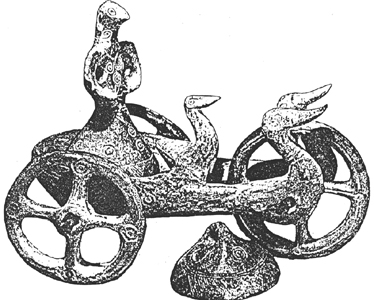

 Two views of Dupljaja Chariot 1.
Two views of Dupljaja Chariot 1.













 Rudra, in a dance pose. Maruts, Rudra.
Rudra, in a dance pose. Maruts, Rudra.




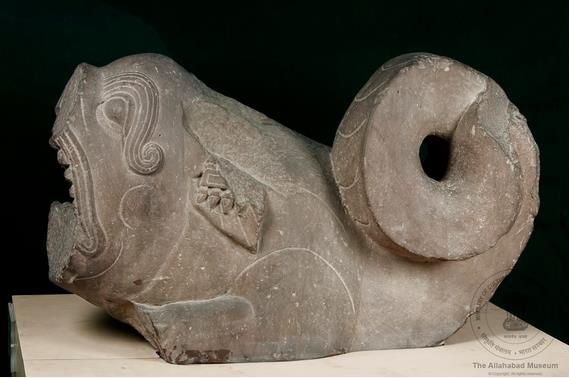
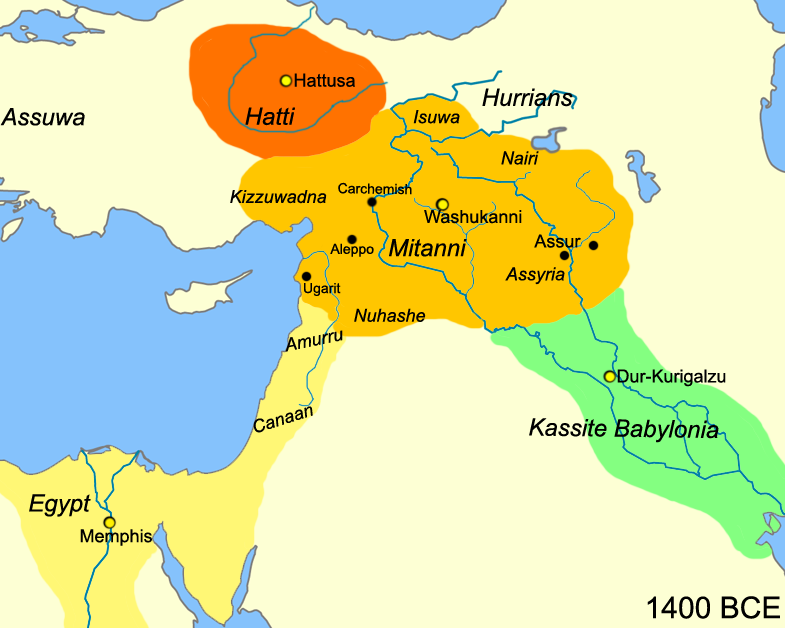
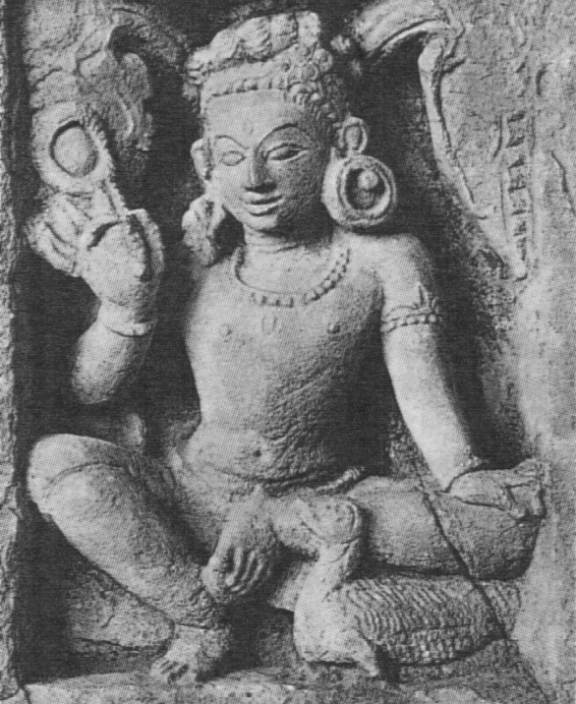 Varuna
Varuna



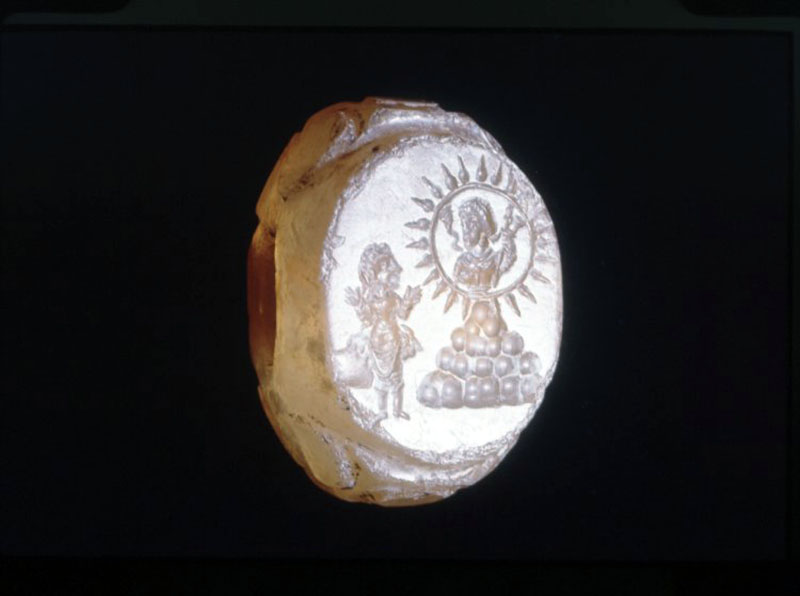



































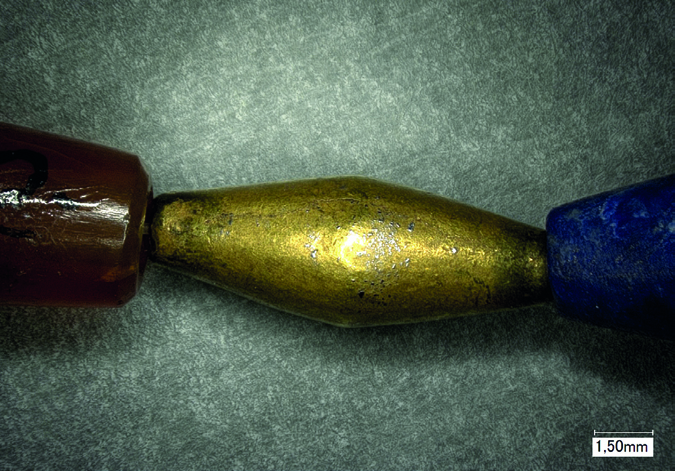
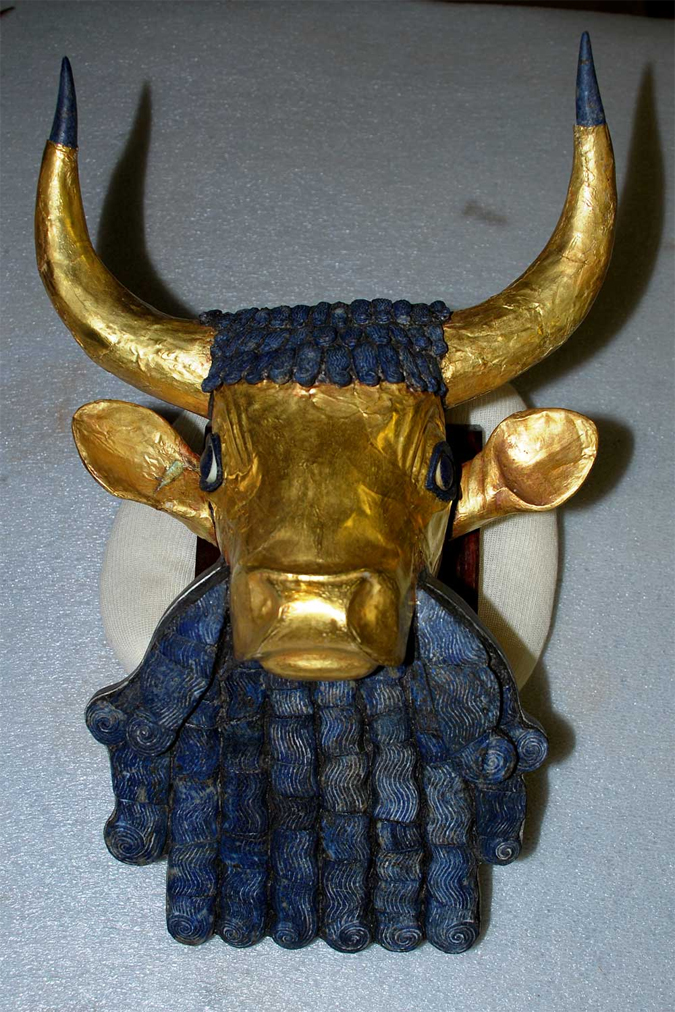
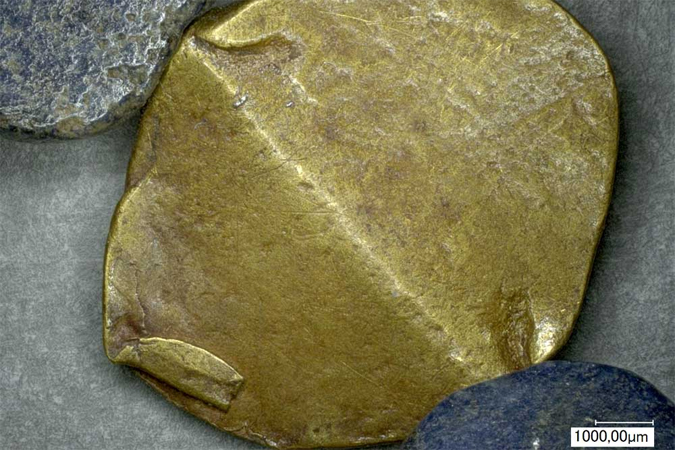











































 Seven script signs recurring on two inscribed copper axes and on a seal and a seal impression, Mohenjodaro; obverse (a,c) and reverse (b.d) of two axe blades (2798=DK7856 and 2796=DK7535) in room 15, house I, block 12A,G section, DK area together with a copper hoard; e is a fragmentary seal (2119) from room 5, house I, block 26,G section, DK area;
Seven script signs recurring on two inscribed copper axes and on a seal and a seal impression, Mohenjodaro; obverse (a,c) and reverse (b.d) of two axe blades (2798=DK7856 and 2796=DK7535) in room 15, house I, block 12A,G section, DK area together with a copper hoard; e is a fragmentary seal (2119) from room 5, house I, block 26,G section, DK area; 
 Harappa Pottery, 5000 years old, Unique in Ancient India, Contrasted with Later Ware: Chanhu-Daro Dicoveries includes 16 x pictures .
Harappa Pottery, 5000 years old, Unique in Ancient India, Contrasted with Later Ware: Chanhu-Daro Dicoveries includes 16 x pictures . Lipstick 5000 Years Old- and Other "Modern" Relics of Ancient India includes 10 x photos
Lipstick 5000 Years Old- and Other "Modern" Relics of Ancient India includes 10 x photos A "Sheffield of Ancient India: Chanhu-Daro's Metal Working Industry 10 x photos of copper knives, spears , razors, axes and dishe s Great New Discoveries of Ancient Indian Culture on a Virgin Prehistoric Site in Sind - further results of pioneer research at Chanu-Daro, in the Indus Valley: relics of craftsmanship, domestic life, and personal adornment in the third millennium B.C. by Ernest Mackay D. Litt, FSA, in 5 x photos of seals and seal amulets with animal designs ...
A "Sheffield of Ancient India: Chanhu-Daro's Metal Working Industry 10 x photos of copper knives, spears , razors, axes and dishe s Great New Discoveries of Ancient Indian Culture on a Virgin Prehistoric Site in Sind - further results of pioneer research at Chanu-Daro, in the Indus Valley: relics of craftsmanship, domestic life, and personal adornment in the third millennium B.C. by Ernest Mackay D. Litt, FSA, in 5 x photos of seals and seal amulets with animal designs ...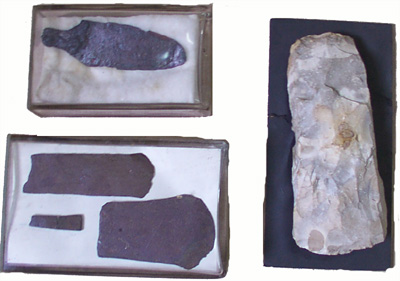
 Santali glosses.
Santali glosses.



























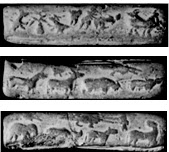

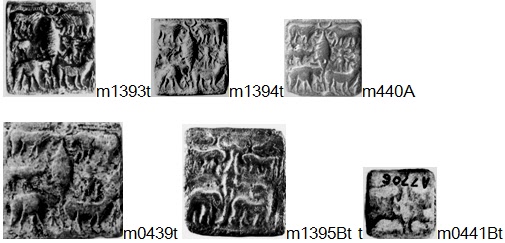



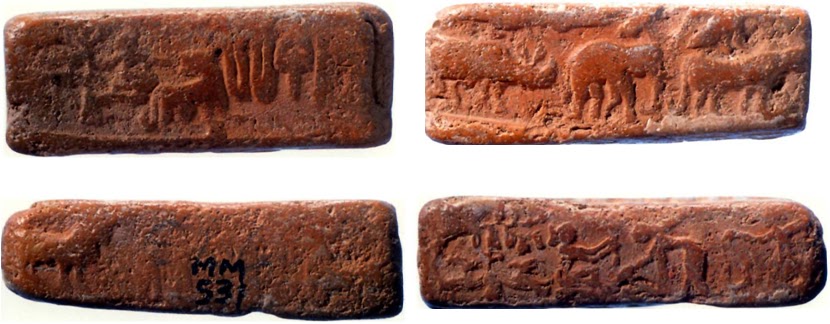



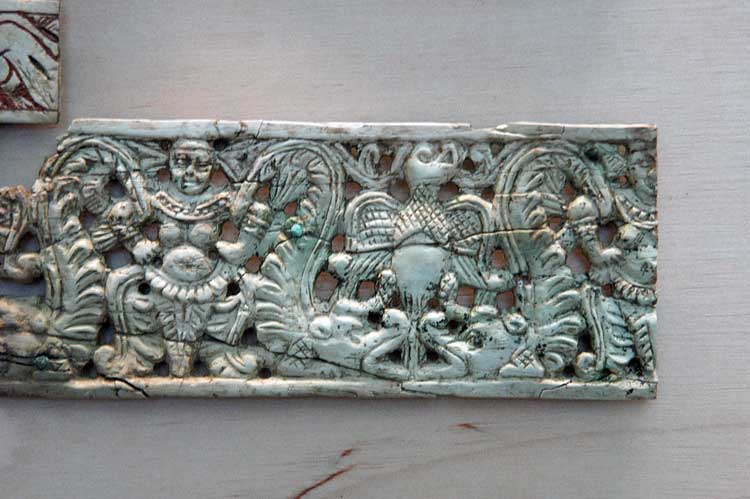











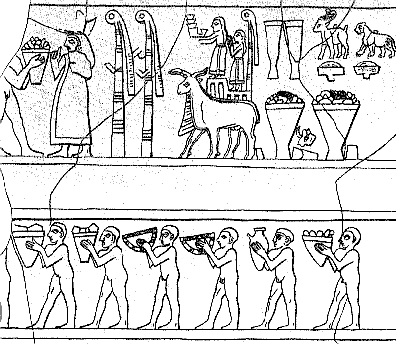 Two T symbols shown below the hieroglyphs of markhor and tiger on Warka vase. The T symbol on the vase also shows possibly fire on the altars superimposed by bun-ingots.
Two T symbols shown below the hieroglyphs of markhor and tiger on Warka vase. The T symbol on the vase also shows possibly fire on the altars superimposed by bun-ingots.




 Figure 1. Map of Iran, with Jiroft, Konār Ṣandal, and sites of the 3rd millenium BCE with chlorite vessels.
Figure 1. Map of Iran, with Jiroft, Konār Ṣandal, and sites of the 3rd millenium BCE with chlorite vessels. Tepe Yahya/Jiroft frieze. Zebus and lions. A zebu gores a lion (the zebu seems to be then on the verge of domestication, Figure 7f.
Tepe Yahya/Jiroft frieze. Zebus and lions. A zebu gores a lion (the zebu seems to be then on the verge of domestication, Figure 7f. c. 2900 BCE. Khafajah. The best known of the chlorite bowls is from Khafajah; it is of Mesopotamian manufacture. •A man kneels upon the hindquarters of one of a pair of standing zebu bulls facing away from each other. In each hand he holds a stream of water which flows over the head and finishes in front of each bull. Plants grow from the right stream, plants grow behind the left bull, and a plant grows in front of each bull. Above the man are a rosette, a crescent and (possibly) a snake. Above the left stream is some sort of carnivore, perhaps a panther.
c. 2900 BCE. Khafajah. The best known of the chlorite bowls is from Khafajah; it is of Mesopotamian manufacture. •A man kneels upon the hindquarters of one of a pair of standing zebu bulls facing away from each other. In each hand he holds a stream of water which flows over the head and finishes in front of each bull. Plants grow from the right stream, plants grow behind the left bull, and a plant grows in front of each bull. Above the man are a rosette, a crescent and (possibly) a snake. Above the left stream is some sort of carnivore, perhaps a panther. 
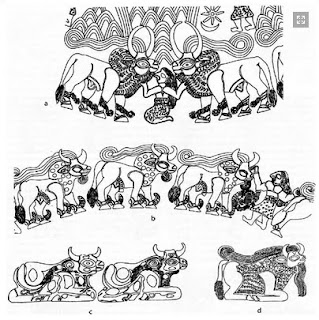




 P Chidambaram. Fearless In Opposition: Power and Accountability. Rupa Publications. 2017.
P Chidambaram. Fearless In Opposition: Power and Accountability. Rupa Publications. 2017.


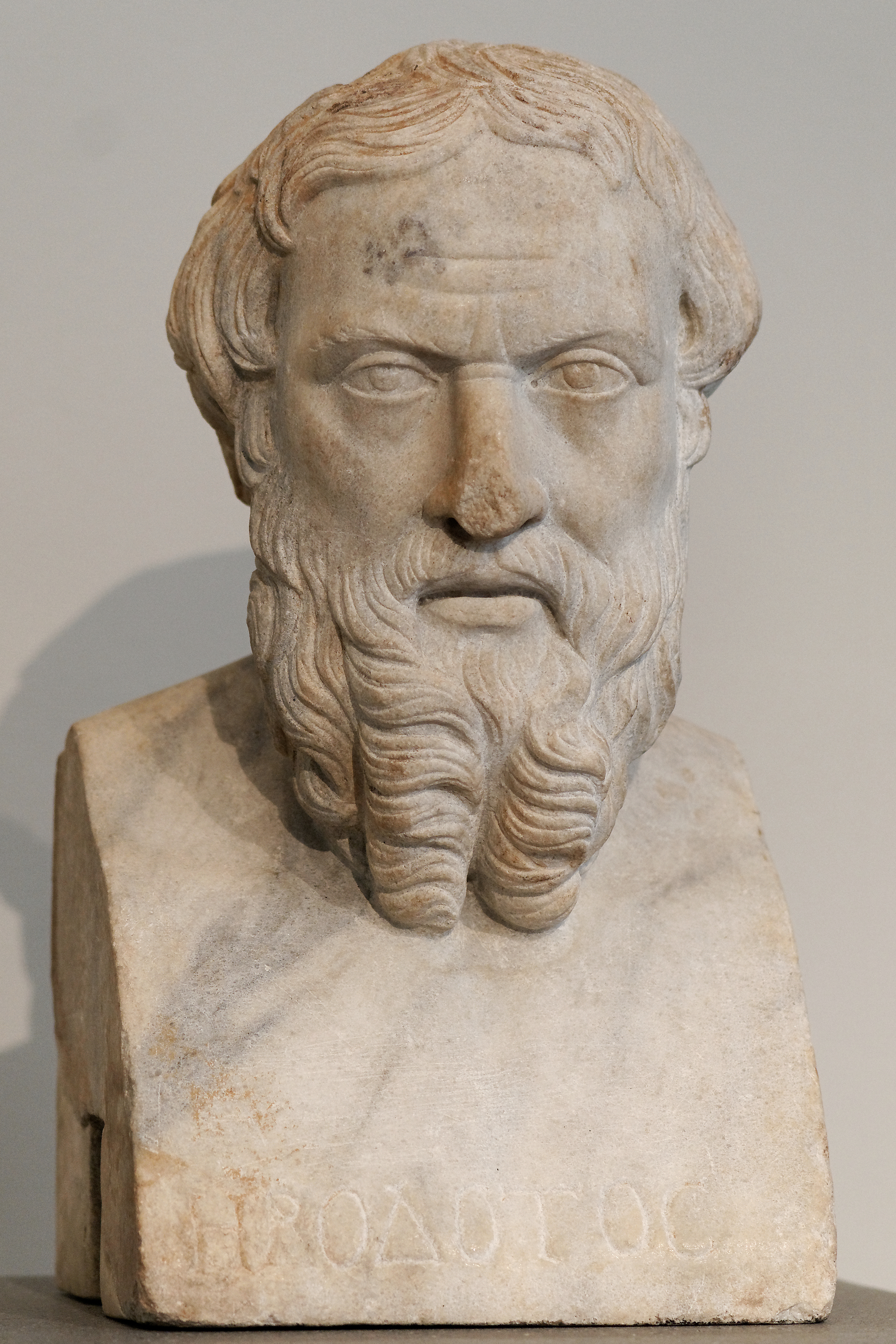 See:
See: 

